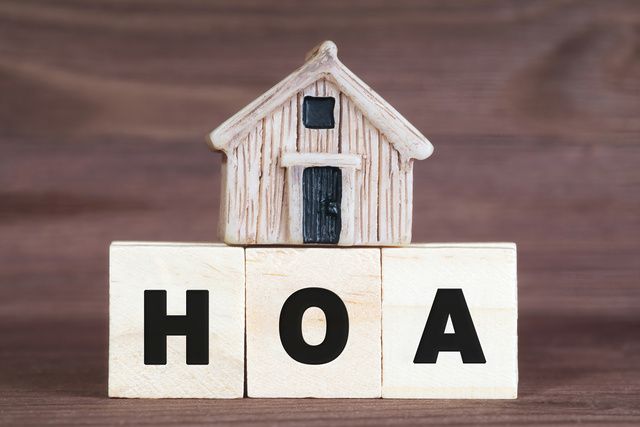
From Chaos to Clarity: Tools That Simplify Community Association Management
Self-managed communities often work incredibly hard. Yet despite that effort, daily operations can feel cluttered and unpredictable. The board might rely on spreadsheets with outdated formulas, payment records scattered through long email threads, and maintenance notes that live on scraps of paper or phone reminders. Residents feel the effects quickly. They wonder why the pool is closed again without notice or why a repair request never reached the right person. Over time, these gaps create frustration that spills into meetings and conversations around the neighborhood.
Most volunteer boards care deeply about their communities. What they lack is not dedication. They lack systems that bring structure and clarity to their work. A unified digital framework, rather than a property management company, provides the consistency that self-managed communities need in order to function smoothly. When everything has a clear place and the board knows how tasks flow, volunteer-led management begins to look polished and dependable.
The goal is not to mimic the bureaucracy of a large organization. The goal is to establish a level of organization that supports volunteers and reassures residents that the community is in capable hands.
Table of Content
- 1 What Community Association Management Really Means in 2025
- 2 What Chaos Looks Like in a Volunteer-Run HOA
- 3 Digital Tools as the Foundation of Consistent, Transparent Operations
- 4 Why Finances Are the First Workflow to Digitize
- 5 Communication Is Not Optional. It Is the Core of Good Management.
- 6 Small Communities Benefit the Most from Structure
- 7 Final Thoughts: Digital Tools Turn Volunteer Effort Into Professional Results
What Community Association Management Really Means in 2025
In 2025, community association management involves more than occasional updates or annual budgeting. It refers to the full range of responsibilities that shape a shared living environment. This includes financial oversight, maintenance coordination, enforcement of community rules, recordkeeping, and clear communication with residents. All of these tasks influence how smoothly daily life proceeds.
A self-managed community can thrive when these responsibilities are structured intentionally rather than handled informally. Boards that rely solely on ad hoc systems often find themselves spending more time sorting through documents than solving problems. Centralization reduces that burden.
Modern tools designed for community association management help volunteer boards organize these tasks in a way that feels manageable. These platforms do not replace human judgment. Instead, they support decision-making by keeping information accessible, organized, and consistent.
What Chaos Looks Like in a Volunteer-Run HOA
Operational chaos often emerges slowly. A board member who is comfortable with spreadsheets takes on all financial tasks. Another handles every maintenance request because they prefer to keep things simple. Invoices are collected inside one person’s email inbox. Policies are stored on a personal hard drive that no one else can access. Residents send questions to whichever board member they meet first, creating communication loops that rely on memory rather than process.
When leadership changes, knowledge disappears with departing volunteers. Even the most well-meaning transitions can result in missing documents or conflicting information. Confusion grows when residents ask for updates, and no one is sure who has the latest version of a file.
This environment leads to duplicated work, missed deadlines, and misunderstandings between neighbors. It can also create legal risk for the association. Without a consistent record of decisions, payments, and communications, disputes become harder to resolve and compliance becomes harder to demonstrate.
Most boards do not intend to operate this way. They simply lack a centralized system to organize the community’s information.
Digital Tools as the Foundation of Consistent, Transparent Operations
A strong community depends on the ability to locate information and understand which tasks are in progress quickly. Operational visibility describes this level of clarity. Every board member should know where documents are stored, which tasks are pending, and what communication has already gone out to residents. The community should have access to reliable information without needing to request it from individual board members.
Digital management platforms serve as a foundation for this kind of transparency. They gather communication, documents, and workflows into a single environment that the entire board can access. Instead of relying on personal inboxes or scattered files, the board can create predictable routines that continue even when leadership changes.
The most effective tools for volunteer-led communities include:
- Cloud-based document storage with organized categories and access controls
- Centralized communication logs that keep a searchable history of messages and announcements
- Automated reminders and task scheduling for dues, maintenance, and community events
When these features work together, confusion drops significantly. Meetings become more productive because everyone starts with the same information. Volunteers spend less time searching for documents or chasing down missed emails. Residents also benefit because communication becomes more reliable and easier to review.
This article on self-managed HOA software highlights the growing availability of tools designed specifically for community associations. These platforms can replace many of the manual processes that traditionally required a property management company, which gives small communities more control over their operations.
Why Finances Are the First Workflow to Digitize
Among all community management tasks, financial oversight is the area where mistakes have the most significant consequences. A late payment can disrupt the budget for essential maintenance. A misapplied deposit can create confusion during audits. Inaccurate spreadsheets can lead to disagreements or compliance issues.
Digitizing financial workflows offers immediate benefits. Online payment portals remove the need to collect checks and track them manually. Real-time ledger updates ensure that payments and expenses are recorded accurately. Automated reconciliation reduces the time spent comparing bank statements to association records.
Tools built for HOA finances provide visibility into every transaction and eliminate the guesswork that often comes with generic accounting software. Volunteers do not need accounting backgrounds to understand the financial health of the community. Clear reports make it simple to plan budgets, explain decisions, and prepare for audits.
Once financial information becomes reliable and easy to access, stress levels drop for both volunteers and residents. Transparency builds confidence, and confidence makes ongoing participation more appealing for future board members.
Communication Is Not Optional. It Is the Core of Good Management.
Residents often judge the effectiveness of a board by how well it communicates. Even when operations are running smoothly behind the scenes, a lack of updates can give the impression that nothing is happening. Confusion grows when residents receive incomplete or conflicting information. Rumors fill the gaps left by unclear communication.
Digital tools help eliminate these issues by offering structured communication channels. Boards can schedule updates, send reminders, and provide easy access to governing documents. Residents can revisit past announcements without asking the board to resend them. This single step can dramatically reduce misunderstandings.
Portals that store meeting agendas, past minutes, and policy documents provide residents with a consistent source of information. When residents know where to find answers, their interactions with the board become more constructive.
This article on community management emphasizes that communication is the foundation of trust for any community association. Boards that communicate clearly and regularly are better positioned to solve problems and create a collaborative environment.
Small Communities Benefit the Most from Structure
Large associations often hire staff or property managers to coordinate operations. Smaller communities do not have that option, yet they face the same expectations from residents. They must collect dues, track maintenance, resolve conflicts, and keep records, but they do so with limited time and fewer hands.
This is why structure matters even more for small communities. A digital platform can handle:
- Dues and billing without depending entirely on a volunteer treasurer
- Maintenance scheduling without a dedicated manager
- Document archives without physical storage or personal computers
These tools create continuity as board members come and go. New volunteers can quickly understand how processes work. They can access historical records without relying on a former board member to forward files or explain past decisions. This stability protects the community from disruption and gives residents confidence that the board can handle change.
Final Thoughts: Digital Tools Turn Volunteer Effort Into Professional Results
Volunteer boards bring energy and care to their communities. The challenge is sustaining that effort while keeping operations organized. Without the right systems, even dedicated teams struggle to maintain order and transparency.
Digital tools provide the structure that volunteer boards need in order to operate smoothly. They streamline communication, simplify financial management, and preserve institutional knowledge. These improvements help residents feel informed and reduce the friction that often arises in self-managed environments.
A community that uses strong digital tools gains the reliability of a professionally managed association while keeping decisions and involvement close to home. Structure becomes a supportive foundation rather than a burden, and volunteer work becomes more rewarding for everyone involved.



